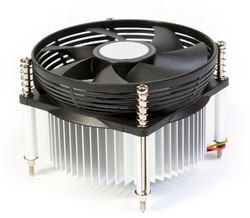Liquid cooling for microelectronic devices
The more power microelectronic devices consume, the more power is dissipated and thus rise in temperature is inevitable. The heat generated must be dissipated to ensure reliable operation under different conditions, without adversely affecting their performance. The EU-funded project THERMAPOWER (Thermal management of high power microsystems using multiphase flows) brought together 12 partners with complementary expertise in microfabrication, experimental techniques, and analytical and numerical modelling. Their close collaboration enabled both knowledge transfer and access to unique experimental facilities, reinforcing the EU position in this technological area. It also offered the opportunity to train 20 early-stage researchers in experimental and modelling techniques for phase-change monitoring and microfabrication. The THERMAPOWER team investigated experimentally two-phase flows in tubes and channels with variable surface patterning. Using advanced imaging techniques, they characterised two-phase flows with deformable interfaces near structured and coated surfaces. Research also covered quantifying condensation and evaporation heat fluxes for surfaces with different degrees of wetting in microchannels with different cross-sections. In particular, flow instabilities associated with two-phase flows were quantified. Results demonstrate that flow instabilities can be recorded by measuring pressure or temperature drops across channels. Through a novel thermal imaging technique, scientists revealed the existence of hydrothermal instabilities at the base of growing bubbles during evaporation. THERMAPOWER's most significant achievement was a numerical model able to predict the complete boiling curve without fitting parameters. The new model can be used in the study of heat transfer, with significant implications for the design of devices as diverse as mobile phones and space equipment.







